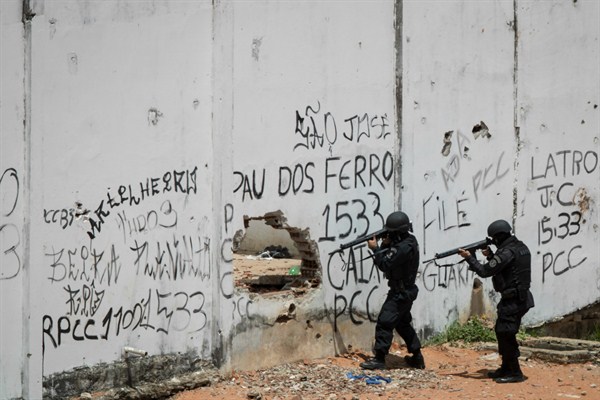Brazil’s president is having a kind of homecoming, but not the one he wanted. Long before ascending to the presidency last summer after the impeachment and removal of Dilma Rousseff, Michel Temer served in the 1980s as the top security official for the state of Sao Paulo, overseeing its prison system. He is now struggling to contain an unprecedented nationwide crisis in Brazil’s jails.
On Jan. 1, the Anisio Jobim Penitentiary Complex in Manaus, capital of the remote state of Amazonas, erupted into violence; inmates took hostages and set to work killing their rivals, throwing their mutilated corpses outside the prison’s walls. With smuggled cellphones, they posted videos of the carnage online. When it was over, 56 inmates were dead. Days later, 31 inmates were killed in an eerily similar massacre in the largest prison in the neighboring state of Roraima. Another riot in Rio Grande do Norte state’s Alcacuz prison killed 26, 15 of them decapitated.
In both Amazonas and Rio Grande do Norte, prisons have since erupted again into fatal, albeit smaller riots after initially returning to normal. More than 130 people have been killed across Brazil this month in prison riots. Despite his experience in public security, Temer appeared to have been caught off-guard by the crisis. Following the initial massacre in Amazonas, Temer waited three days before announcing the release of more than 1 billion reais—about $315 million—for the construction of state and federal prisons, as well as funding for cellphone jammers to disrupt gang communication behind bars.

